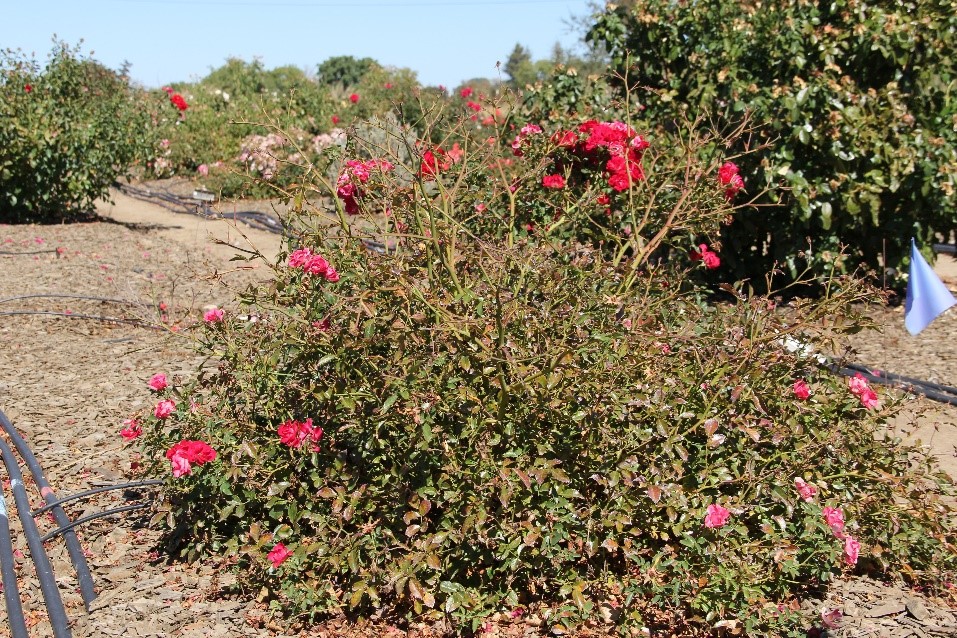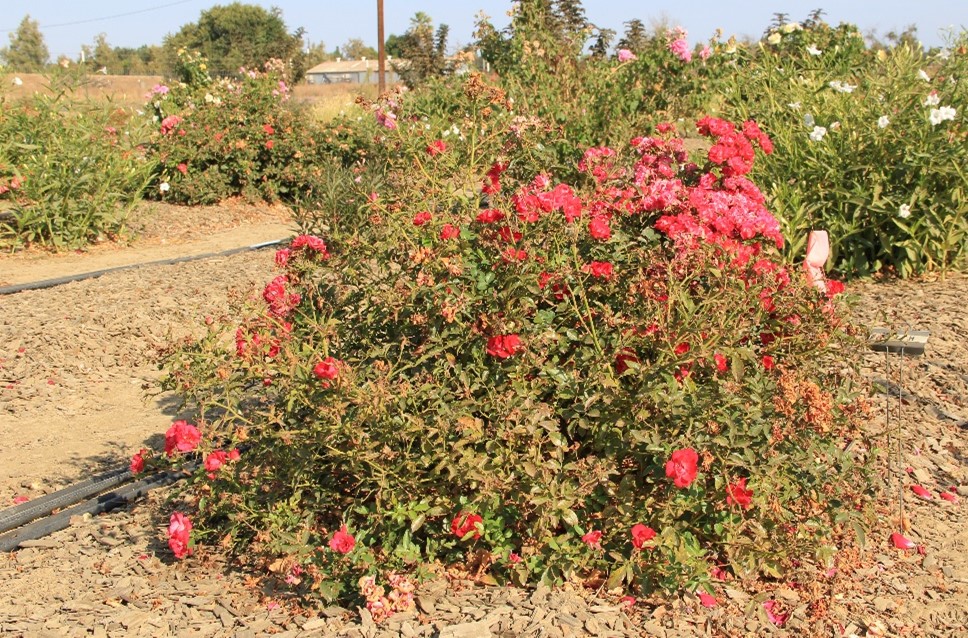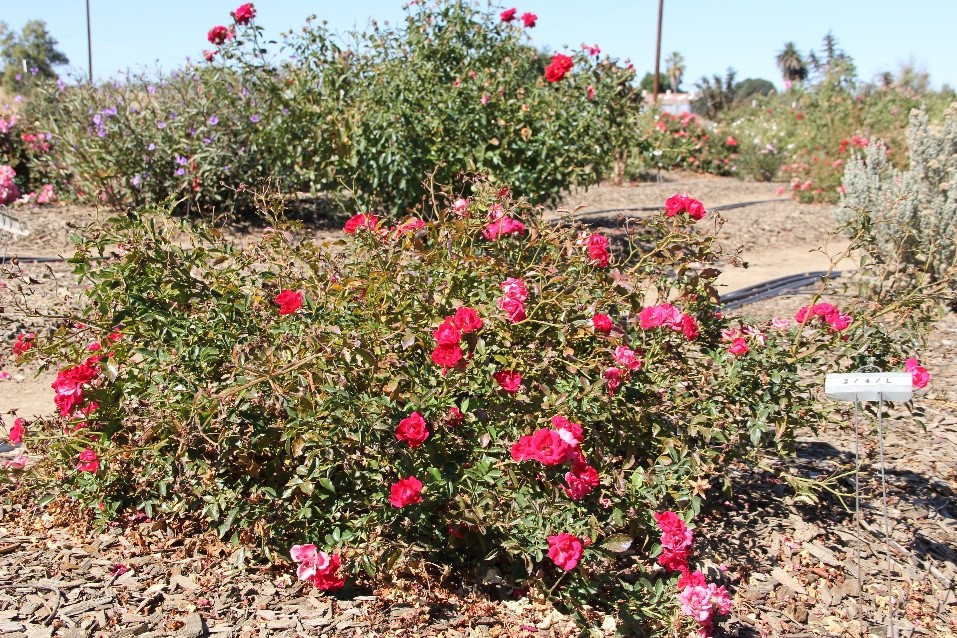Rosa 'Meigalpio'

Rosa ‘Drift Red’ in April 2016 in full bloom. Photo: SK Reid.
Summary
UC Davis is located in Davis, California, this site has a silty clay loam soil and plants are irrigated with potable water. More information about the field sites is located in the Nuts & Bolts section.
Red Drift showed good disease resistance and good tolerance of the thrips damage common to all the roses grown in our field, flowering on and off from April to October (Table 11). Some powdery mildew was present in spring, but plants outgrew it by midsummer. It performed well for most of the season on any irrigation level until September, when the three lowest irrigation levels produced unacceptable foliage quality. At the lowest irrigation level, 20% of ETo, flowering wasn’t enough to overcome this deficit, and the overall appearance of the plants dropped to an unacceptable level, while the two highest irrigation treatments rebounded in October as weather cooled. For this reason, we recommend growing this irrigated at 40% ETo or above. There were no significant differences in growth between treatments.

Red Drift® rose in September 2016 on the 40% ETo treatement. Photo: SK Reid.

Red Drift® rose in September 2016 on the 60% ETo treatement. Photo: SK Reid.
Basic Info
| Submitted by: | Star Roses & Plants |
| Site(s): | UC Davis |
| Trial Exposure: | Sun |
| Year evaluated: | 2016 |
Height & Width after 2 years: | 1.7' x 3.9' |
Reported Height & Width at maturity: | 1.5' x 2.5' |
| WUCOLS plant type: | S Gc |
| Water Needs & WUCOLS Region: | Medium - Region 2 |
Mean Overall Appearance rating: (1-5 Scale, 5 is highest) | 3.9 |
Flowering Months: | April-October |
Growth and Quality Data

Red Drift® rose in August 2016 on the 60% ETo treatement holding some hips, blooming unevenly. Photo: SK Reid.

Red Drift® rose in September 2016 on the 20% ETo treatement. Photo: SK Reid.